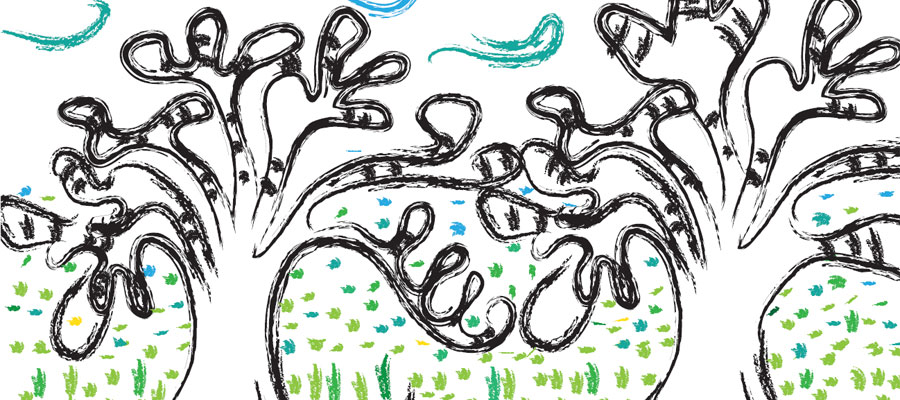EPIGENETIC AND EPITRANSCRIPTOMIC REGULATION

While the ability to read the human DNA sequence has dramatically changed our understanding of our genetic makeup, the recent discovery of an epi-genome or epi-transcriptome, whereby DNA, RNA and histones can be reversibly modified based on environmental status, has transformed our understanding of the genetic code. These modifications have dramatic effects on gene regulation, playing broad roles in human health. Epigenetic modifications have been found to be altered by nutrition, maternal health, carcinogens and other exposures. They can serve as a stable cellular memory, helping to explain disease or phenotypic differences that appear years after an injury or stimulus has occurred. Reflecting on the importance of a growing knowledge-base of epigenetics, the National Institutes of Health in the United States funded two large programmes, ENCODE and the Epigenetics roadmap project, to map various epigenetic markers across different cell lines and in almost every tissue in the human body. This has generated a rich resource of information on the prevalence and dynamics of epigenetic markers in different tissues and cell lines, and enabled integrated analysis to determine cellular state. In addition, studies on ten Caucasian individuals show that there is extensive inter-individual variation in epigenetics, indicating that epigenetic regulators may be a good target in personalised medicine. However, the distribution and dynamics of epigenetic marks in larger cohorts, especially in understudied Asian populations, remains to be studied. There is thus an opportunity for Singapore to integrate epigenetics together with population genetics to understand the impact of genome on our population health.
Besides epigenetics, the field of epitranscriptomics, defined as modifications beyond RNA sequence, is still fairly nascent. While modifications have been first found in tRNAs and rRNAs in the 1950s, they are only recently found to exist in mRNAs to regulate their expression. However, their diversity, distribution, prevalence and function on mRNAs is far from clear. RNA modifications have been associated with numerous human diseases, including different types of cancer (e.g. breast, lung, cervical, liver, AML and glioblastoma), neurological diseases (e.g. Parkinson’s disease, schizophrenia, depression and bipolar), and metabolic diseases (e.g. diabetes, cardiomyopathy and immunological diseases). However, due to limited antibodies and chemical solutions, only a few modifications could be detected accurately genome-wide. Due to the nascency of the field, foundational technologies are still in the process of being built to study RNA modifications and to interrogate the interplay of genetics, epigenetics and epitranscriptomics in human health.
Singapore, like many other developed countries, has an increasingly ageing population. As epigenetic and transcriptomic changes frequently underpin age-associated diseases like cancer, epigenetic/ transcriptomic diseases are likely to become even more important to Singaporean society in the years ahead. Unlike DNA sequence, epigenetics/transcriptomic markers are naturally reversible. This means that epigenetic/transcriptomic modifications can be added on by writers, interpreted by readers, and removed by erasers. This dynamic nature of epigenetic/transcriptomic marks, together with interpersonal variation and dysregulation in disease make them good drug targets amenable to treatment using conventional chemical or molecular entities. As this targets only the somatic cells of interest in the single individual, this makes epigenetic therapies an overarching, wide-ranging option for exciting and promising alternatives for disease treatment. While the epitranscriptomic field is too nascent to have market evaluations, identifying dynamics of epitranscriptomic markers in diseases enable to us find new candidates for drug targeting.
Several labs at GIS have worked on genome-wide epigenetic profiles of myriad tissues and disease states, as well as epitranscriptomic profiles and analysis. We also have high-throughput screening platforms and experience with compound screening to specifically interrogate and perturb epigenetic and epitranscriptomic modifiers. There is also world-class expertise to study RNA and DNA modifications using nanopore sequencing. As a third generation sequencing platform, nanopore sequencing has the ability to read DNA and RNA molecules directly through a biological pore without the need for PCR amplification. GIS has an early developer license with Oxford Nanopore Technologies, and is an early adopter of nanopore sequencing in Asia. This gives us a technological advantage to make significant developments and scientific discoveries.
GIS strengths include:
- Bioinformatics and big data analytics: a number of labs and PIs have expertise in this area, and GIS has access to epigenetic datasets from different labs including ChIP-seq, ATAC-seq, 3D conformational studies.
- High-throughput screening platforms: useful for compound screening to identify epigenetic modifiers.
- Next-generation sequencing platforms: both Illumina and nanopore sequencing.
- Functional epigenomics: relevant for identifying potential drug targets.
A*STAR celebrates International Women's Day

From groundbreaking discoveries to cutting-edge research, our researchers are empowering the next generation of female science, technology, engineering and mathematics (STEM) leaders.
Get inspired by our #WomeninSTEM
.png?sfvrsn=2e525642_5)